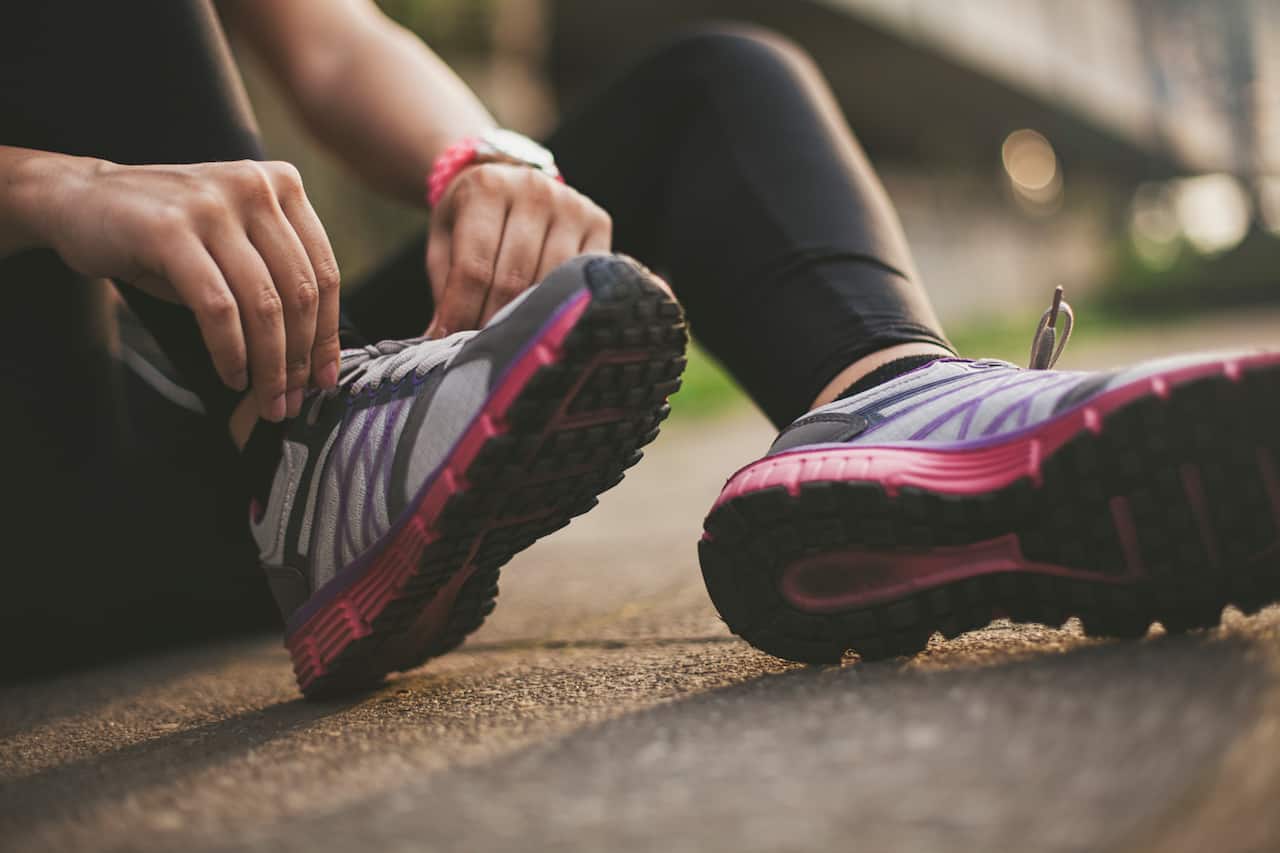3 Tips for Choosing Your Best Running Shoe

Author: Enid McDonough
Are you looking to start power walking, jogging, or running? Or maybe you are just ready to up your game! When you decide to move more, faster, or differently, protecting your leg muscles and joints should be your number one priority, and one of the most important ways to do this is by choosing the right running shoe.
There are several factors to consider when finding the best running shoe for you. To help you find your perfect fit, we’ve put together our top 3 tips.
Tips #1: Think about what makes your foot and walking style unique
You are unique. So are your feet and your walking and/or running styles.
Pronation is a term that describes the motion of rolling your foot from your heel to your toe as you walk — basically the walking angle of your foot. A proper foot pronation starts with placing your foot down at the outside of your heel and rolling evenly to the ball of your foot. If you roll too much towards the inside of the foot, you are over-pronating, which can be caused by a low arch or flat foot. Underpronation is the opposite — it’s when your foot rolls too much to the outside, and is usually caused by a high arch.
Foot arches can be low (flat foot), medium or high, and the width of your foot may be narrow, medium or wide.
Your unique pronation, arch, and width are all important considerations in finding a brand and style of shoe that’s best for you.
Tip #2: Consider specific differences in shoe styles
Running and other workout shoes are grouped into 3 basic categories:
- Motion control (or super-stability): These shoes help stabilize your foot and ankle and are especially helpful if you overpronate.
- Stability: These shoes offer a balance of stability and flexibility, and are best if you over- or under-pronate slightly.
- Neutral: These shoes are curved to move with your foot — you can feel the road more. These shoes tend to be the most flexible, but this can vary based on the amount of cushioning you chose.
Shoe cushion levels are rated from one (least cushioning) to five (maximum cushioning). Level five will protect your foot the most, but also make the shoe less flexible. Level one, on the other hand, will give you more of a “barefoot” feel.
Tip #3: Shop in-person instead of online
Your pronation and foot shape will make certain brands and styles better choices, but comfort is most important and only you can feel what’s right for you. It’s critical that you walk or run in the shoe at the store before making a final decision. When you are trying on shoes, pay close attention to both the heel and the toe box to make sure each part of the shoe is right for your foot.
While online shopping is convenient and a place to price shop and read lots of users’ reviews, consider visiting a qualified running shoe store for your first evaluation. Employees who work at these stores often have the knowledge and equipment needed to evaluate your foot and walking style. In addition, they often have treadmills where you can walk or run in a few different pairs of shoes to try before you buy.
Pro tip: If you love your new shoes and you have the means, consider buying a few identical pairs (probably on-line, as stores often only have 1 or 2 pairs in each size). For those of you who run or take long walks regularly, shoes wear out in about three to six months and shoe companies change their styles frequently. These new styles may not always meet your needs. When companies do discontinue a style, it’s a great time to grab a couple of pairs at a discount!
Speaking of getting moving… if you’re ready to start changing your life, sign up for your 14-day trial today!

